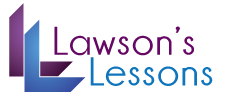Objective: Students will give a short speech which is videotaped and, as a class, critique the use of hand gestures used in each. Students will then work in pairs using the critiques to improve the use of gestures. The students will then be videotaped again and self-critique for further improvement of their speech giving technique.
Materials: Video camera, VCR, television, video of famous speech (example: Bill Clinton’s “I did not have sexual relations with that woman” speech), student’s short speeches
Steps:
1. Deliver a thirty to sixty second speech to the class with both arms at your side.
2. Deliver the same speech using exaggerated gestures.
3. Discuss the use and importance of hand gestures in speech giving.
4. Show video of a well-know speech and discuss the gestures used, noting which points were emphasized and how big or small the gestures were. Note if the gestures looked natural, or looked rehearsed and artificial.
5. Discuss the relationship of gestures to the size of the venue and audience.
6. Videotape each student giving a short speech and then as a class critique the gestures used during the speech.
7. Let the students practice improvements in their gestures in pairs.
8. Video the students again and let the students self-critique the video.
Result: Students will practice their speeches until the gestures look natural and fit the speech. They will be able to deliver a speech using appropriate hand gestures for the venue and audience.
Kim Hauschild
Fall 2009
Circle Time with Hand Gestures
Realizing the importance of hand movements
Materials: Currently read story from class that was read in class; note cards with vocabulary words and meanings on them.
Objective: The students will understand the importance of hand gestures and know where to add them to a speech.
Steps:
1. First hand out a copy of the story that was read in class currently. In the copy of the story there are highlighted words that I chose—they are vocabulary words that will be used for this hand gesture game the students are going to play.
2. Then split the students into two groups. The easiest way is to split the room in half, either sideways or up and down the aisles.
3. Next, have the students of each group stand in a circle so there are two complete circles in the classroom; give each student in the class a flash card with a vocabulary word on it.
4. The students then need to go around their circle, say their vocabulary word, and have the rest of the circle repeat it after them. Then the students need to say what it means and have the rest repeat it again.
5. Last, each student needs to create a hand gesture to fit their vocabulary word. This will help the other students remember the hand gesture to remember the vocabulary word better. (Example: ichthyology—the study of fish; a hand gesture could be to swim around.)
Result: The students should understand the significance of hand gestures after this game. They will be able to notice how a hand gesture can bring out a word very strong. This will help them when it is time to add them to their speeches.
Fall 2007
Gestures
Do Not Overdo It!
Objective: Within a 50 minute class period, students will practice incorporating gestures into their speeches based on the guidelines given in class.
Materials: Students will need to bring a copy of their written speeches to class.
Evaluation sheets for everyone in the class concerning gestures.
Steps:
1. First the teacher will introduce gestures by reading a famous speech such as “I Have A Dream” by Martin Luther King Jr. to the class and overdoing the gestures to the point where the speech become comical.
Throwing hands out and then quickly pulling them back in would be one gesture. Not moving at all would be another gesture. Moving both hands at one time would be another. These gestures would be put into the speech throughout my delivery.
2. Then ask the students after the demonstrations if they enjoyed my delivery of “I Have A Dream.” The answer the teacher hopes to evoke is no, and hopefully the students will say something to the extent of you looked funny while presenting, or something of that nature.
3. Then the teacher will lecture and demonstrate for about 15 minutes or so about the importance of proper gesturing in a speech. We will talk about using fluid and flowing hand motions. Making sure the hand is above the waist when gesturing, and making sure the movement is motivated by the words within the speech. Do not move both hands at one time because we do not do that naturally.
If teacher can obtain a copy of Martin Luther King Jr. presenting the speech on video, present this to the class for a great demonstration.
4. During the remaining time students will have an opportunity to practice their gestures within their speech in front of their classmates.
5. Break the students up into small groups of 3-5 members (depending on class size). Tell them to read their speech and incorporate gestures as they do so to the members of their group.
6. Give everyone in the classroom a sheet for evaluating the gestures given in their group members’ speech. This way, if the individual forgets what their group members said to them, they will have a hard copy of the information right there when they are practicing their speech at home, or at school before they actually give the speech.
7. Tell every group to give a quick evaluation of their members after they give their speech, and then hand them the evaluation sheet for future referencing.
Results:
If students feel they need more feedback, set up times at the end of school to meet with students and work on their gestures within their speeches for that whole week before they give their speeches. Otherwise, advise practice at home.
